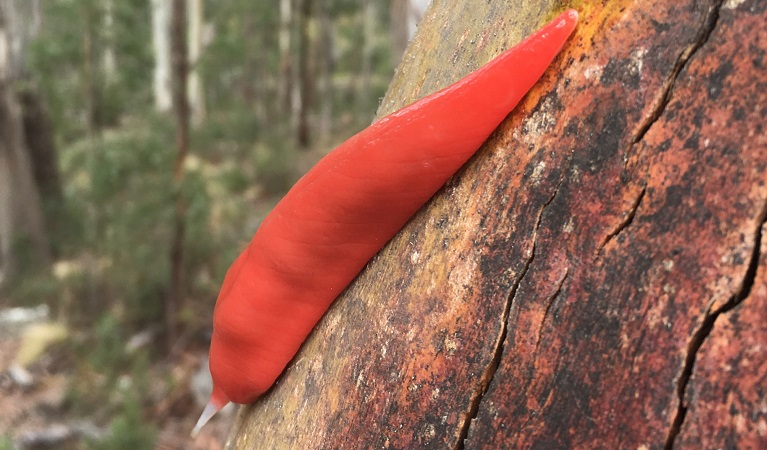Mount Kaputar land snail and slug project
Mount Kaputar National Park is home to a threatened group of snails and one giant slug found nowhere else on earth. Download the Slug sleuth app, and help us save them.
Read more about Mount Kaputar land snail and slug project
Download the Slug sleuth app
This NPWS app collects data gathered by citizen scientists about the snail and slug threatened ecological community (TEC) in Mount Kaputar National Park and the Nandewar Ranges. In particular, park users can report sightings of the giant pink slug via the app. This is helping scientists determine where the slug is found, its habitat preferences and if it’s being affected by a changing climate over time.
Because the TEC was impacted by the 2019-20 bushfires, Slug sleuth is also helping us assess the species’ post-fire recovery.
About the land snail and slug project
High-elevation ecosystems are particularly vulnerable to the effects of climate change, and Mount Kaputar, near Narrabri, is right on the edge of a subalpine ecosystem.
These snails and slug are found nowhere else in the world. There are 11 snail species and one slug species: the Kaputar or giant pink slug. It is florescent pink and grows to around 20cm long and 6cm wide. It feeds at night, on the biofilm of lichen, fungi and micro-algae on the surface of eucalypt bark and rock faces. It can be seen on cool misty mornings as it descends to hide among the leaf litter of the forest floor. The slugs are most commonly observed during and after rainfall.
It's crucial to the slug and snails' survival that we understand more about their ecology and manage the threats to them. A targeted strategy for managing this TEC has been developed under the Saving Our Species program, and includes Slug sleuth. Our aim is to protect the species and address threats from climate change, pest animals and inappropriate fire regimes.

